How to Prevent Wildfire in High-Risk Areas: Essential Tips to Stay Safe
Do you know that approximately 90% of wildfires are caused by human activities? In the face of the increasing number of wildfires, we need to raise awareness and responsibility. It’s essential to know “How to prevent wildfire?” to protect our lives and Mother Nature.
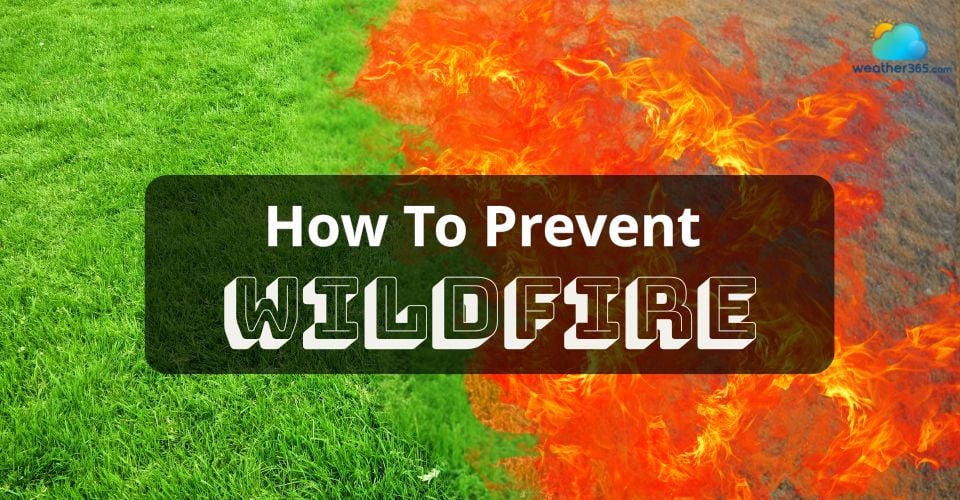
Prevention tips for wildfire
- Overview
- Most prone to wildfire regions
- How to prevent wildfire?
- Regularly check the weather forecast (drought conditions)
- Build a safe campfire
- Ensure to douse your campfire completely
- Keep vehicles off dry grass
- Maintain equipment and vehicles regularly
- Check conditions and regulations before using fireworks
- Cautiously burn debris
- What to do if a wildfire starts?
- If you are outside
- If you are at home
- If you are driving through wildfire smoke
Overview
Worldwide wildfires are escalating in frequency and intensity. This issue has become a severe global threat.
Regions like the United States, Australia, and Canada are particularly impacted by record-breaking devastation.
2023 marked a record-breaking year with approximately 2,170 megatonnes of carbon emissions. In 2024, emissions remained high at 1,940 Mt C, with Bolivia and Brazil experiencing their worst fire seasons in over a decade. By mid-2025, wildfires had already released 1,100 Mt C, with Canada, Russia, and South Korea emerging as major hotspots.
According to the Global Forest Watch (2023), wildfires burned approximately 328 million hectares of land annually between 2001 and 2022. In 2023 alone, severe fires in Canada destroyed over 18.5 million hectares. The EU's Copernicus Atmosphere Monitoring Service (CAMS) reported 6,500 megatons of CO₂ emissions from global wildfires—the highest in two decades.
Climate change, deforestation, and human activities intensify fire risks, with 84% of wildfires caused by human actions (WWF, 2022). As wildfires increase in frequency and intensity, urgent mitigation strategies are needed to protect ecosystems and communities worldwide.
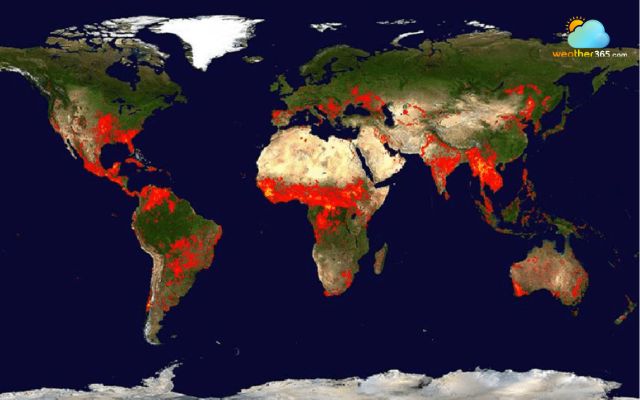
Wildfires have become a severe global threat
Most prone to wildfire regions
Wildfires pose an increasing global threat, disproportionately impacting specific regions. Some most wildfire-prone areas around the world consistently experience extensive and severe fire seasons.
These regions face heightened risks due to their climate, vegetation, and a growing confluence of natural and human-induced factors.
Take a look at this table of the most wildfire-prone worldwide regions below.
|
Country/Region |
Key Areas |
Fire Season |
Why It's Prone |
|
Australia |
New South Wales, Victoria, Queensland |
Nov – Mar (Summer) |
Hot, dry summers, flammable eucalyptus, dry lightning, high winds |
|
United States |
California, Texas, Arizona, Colorado, Oregon |
May – Nov |
Drought, dry vegetation, wind, lightning, and human activity |
|
Brazil (Amazon) |
Acre, Rondônia, Pará |
Jul – Oct (Dry season) |
Deforestation, slash-and-burn farming, dry climate |
|
Canada |
British Columbia, Alberta, Yukon |
May – Sep |
Dry lightning, vast boreal forests, heatwaves |
|
Greece |
Attica, Evia, Peloponnese |
Jul – Sep |
Hot/dry summers, strong winds, arson, dry brush |
|
Spain |
Andalusia, Catalonia, Galicia |
Jun – Sep |
Heatwaves, rural land abandonment, dry vegetation |
|
Portugal |
Central, Northern regions |
Jun – Sep |
Intense summer heat, pine/eucalyptus forests, wind |
|
Russia (Siberia) |
Yakutia, Irkutsk, Krasnoyarsk |
May – Sep |
Peat fires, warming temps, remote forests |
|
South Africa |
Western Cape, Garden Route |
May – Oct (Dry season) |
Dry winter vegetation, invasive plants, urban encroachment |
|
Indonesia |
Kalimantan, Sumatra |
Jul – Oct |
Peatland fires, slash-and-burn agriculture, dry conditions |
How to prevent wildfire?
Preventing wildfires is crucial for protecting lives, property, and natural ecosystems. Here's how we can significantly reduce the risk.
Regularly check the weather forecast (drought conditions)
Effective wildfire prevention depends on understanding environmental factors.
Always monitor local weather and drought conditions, as these critically impact how flammable vegetation becomes.
When temperatures are high, humidity is low, and winds are strong, the risk of a wildfire increases dramatically.
During such hot, dry, and windy conditions, it's crucial to avoid all activities that involve fire or sparks.
If conditions are unfavorable, prioritize non-flammable alternatives for tasks like campfires, equipment operation, off-roading, or debris burning.
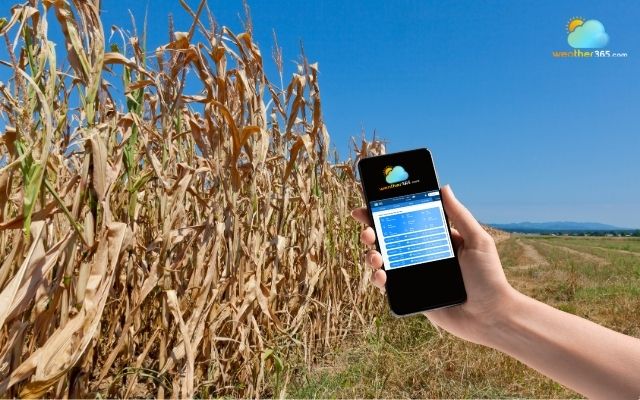
Check the weather forecast regularly
Build a safe campfire
Campfires are one of the most common causes of wildfires. Thus, to prevent a wildfire, always:
-
Choose a safe location: Pick an area away from dry grass, leaves, or overhanging branches.
-
Clear the area: Remove all flammable materials within a 10-foot radius around your fire.
-
Keep it small: It's easier to manage a small fire.
-
Never leave a campfire unattended even for a moment.
-
Extinguish completely: Drown the fire with water, stir the ashes, and add more water until it's cool to the touch. If it's too hot to touch, it's too hot to leave.

Build a safe campfire and follow regulations
Ensure to douse your campfire completely
Ensuring your campfire is completely out is paramount for preventing devastating wildfires.
Follow these crucial steps for proper extinction:
-
Douse the fire thoroughly with at least one bucket of water.
-
Stir the ashes to expose any hidden embers.
-
Add another bucket of water, stirring again until no smoke or steam is visible.
-
Before leaving, always confirm the ashes are cold to the touch. If it's hot, it's not out.

Before you leave, totally extinguish your campfire
Keep vehicles off dry grass
Your vehicle's hot exhaust system can reach extreme temperatures, often exceeding 1,000 degrees Fahrenheit.
This intense heat poses a significant wildfire risk, especially when driving or parking over dry vegetation.
To prevent accidental ignitions, always keep your vehicle off dry grass, leaves, and other flammable materials.
Opt for paved surfaces or cleared areas to park, and you need to be cautious when off-roading.
This simple step is simple but vital for safeguarding our wildlands.

Avoid driving or parking over dry grass to prevent accidental ignitions
Maintain equipment and vehicles regularly
Faulty equipment and poorly maintained vehicles are significant wildfire risks.
Sparks from worn-out parts, hot exhaust systems, or dragging chains can easily ignite dry vegetation.
Thus, it's crucial to regularly inspect and maintain all machinery and vehicles to ensure they're in optimal working order.
This proactive approach includes proper spark arrestors and fluid leak checks.
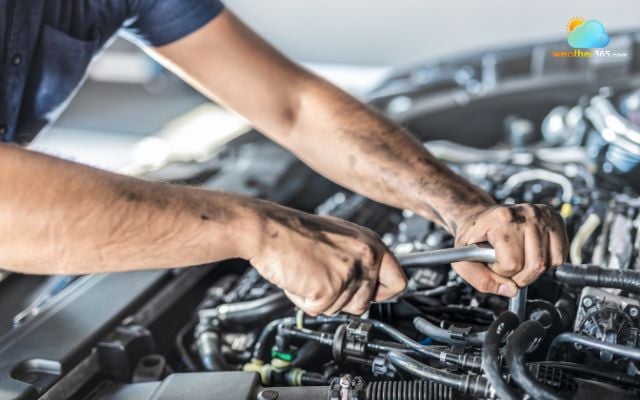
Regularly check and maintain vehicles
Check conditions and regulations before using fireworks
Fireworks are a significant wildfire hazard. In the U.S. alone, they ignite tens of thousands of fires annually, and sadly, send thousands to the emergency room.
Before using any fireworks, always check local federal, state, and city regulations, as laws vary widely.
Ignoring these can lead to hefty penalties or, worse, spark a devastating wildfire. Consider safer alternatives like glow sticks or silly string to celebrate.
This effectively prevents potential tragedy and protects our communities and wildlands.

Using fireworks safely to avoid wildfires
Cautiously burn debris
Burning yard debris is a common way to clear property, but it must be done with extreme caution to prevent wildfires.
-
Check weather conditions: Even a light breeze can carry embers to new fuel. Choose a calm, wind-free day and keep your burn area small, manageable, and at least 50 feet from structures or trees.
-
Check local regulations: Always know and follow local burning laws and restrictions. Permits may be required.
-
Create a clear perimeter: Remove all flammable materials around your burn pile.
-
Have water and tools ready: Keep a shovel, rake, and water source (like a hose) nearby.
-
Stay with your fire: Monitor the burn until it's completely out. Never leave the fire unattended. Fully extinguish all embers before leaving the site.
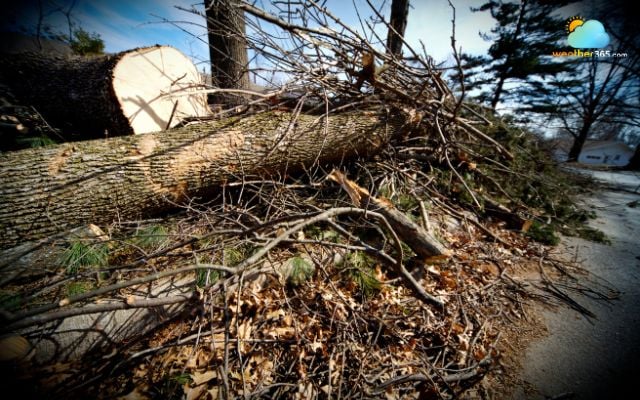
Be careful when burning yard debris
What to do if a wildfire starts?
Whether we try to do everything to prevent wildfires, unfortunately, they still can happen at any time.
If you see a wildfire, what to do? Follow these wildfire safety tips.
If you are outside
✅ Stay calm: Panic can impair your judgment. Take a deep breath and assess the situation quickly.
✅ Alert Authorities: Immediately call emergency services (like 911 in the U.S. or your local equivalent) to report the fire, its location, and any details you observe. The sooner firefighters know, the faster they can respond.
✅ Warn Others: If there are other people nearby who may not be aware of the fire, alert them to the danger.
✅ Identify Escape Routes: Determine the safest and quickest way to get away from the fire. Look for natural breaks like roads, rivers, or open clearings.
✅ Move Uphill and Away from Valleys: Fire tends to spread rapidly uphill. Valleys and ravines can also act as chimneys, channeling fire and smoke quickly. Move perpendicular to the fire's spread if possible, to avoid being directly in its path.
✅ Cover Your Mouth and Nose: Use a wet cloth or clothing to help filter out smoke and protect your respiratory system.
✅ Stay Low: If smoke is thick, stay low to the ground where the air is clearer.
✅ Protect Your Skin: If time permits, cover exposed skin with clothing to protect against radiant heat and embers.
If you are at home
✅ Stay Calm: While stressful, keeping a clear head helps you make better decisions.
✅ Call Emergency Services (e.g., 911): Immediately report the fire, its exact location, and the direction it's moving. Provide information as much detail as possible.
✅ Monitor Official Alerts: Tune into local news, emergency radio, or official government alerts for updates and evacuation orders. Follow these instructions precisely.
✅ Gather your emergency kit: Have a “go-bag” ready with essentials like important documents, medications, cash, first-aid kit, flashlight, radio, extra batteries, etc.
✅ Close Windows and Doors: This helps prevent embers from entering your home.
✅ Shut Off Utilities (If instructed by authorities): Turn off natural gas, propane, and electricity at the main shut-off valves/breakers if instructed and it's safe to do so.
✅ Move Flammable Items: Bring outdoor furniture, cushions, garbage cans, and other easily ignitable items indoors or move them far away from the house.
✅ Evacuate immediately: If an evacuation order is issued, leave immediately. Wildfires can spread with astonishing speed.
✅ Follow Designated Routes: Use the evacuation routes provided by authorities.
✅ Tell Others Your Plans: Inform family or friends where you are going.
✅ Lock Your Home: Secure your home as you leave, but do not delay your departure to do so.
If you are driving through wildfire smoke
✅ Slow Down Immediately: Smoke significantly reduces visibility, making it crucial to decrease your speed. This gives you more time to react to hazards like slowed or stopped vehicles, debris, or wildlife.
✅ Turn on Headlights (Low Beams): Even in daylight, activate your headlights on their low beam setting. High beams can reflect off the smoke and worsen visibility. This also makes your vehicle more visible to others.
✅ Close Windows and Vents: Seal your vehicle as much as possible to prevent smoke from entering the cabin.
✅ Set HVAC to Recirculate (or Turn Off): If your car has a recirculation mode for the air conditioning or heating system, activate it. This will prevent outside smoky air from being drawn in. If your system doesn't have this feature, turn off the fan/HVAC completely.
✅ Use N95 Masks (If Available): If you have N95 or KN95 masks, wear them. They can filter out fine particulate matter from the smoke, protecting your lungs.
✅ Tune into Local Radio: Listen to local news or emergency broadcast stations for updates on fire location, road closures, and evacuation orders.
✅ Do Not Rely Solely on GPS: GPS systems may not have real-time updates on road closures due to fire.
✅ Turn Around if Safe: If you see flames approaching the road or feel extreme heat, and it's safe to do so, turn around immediately and take an alternate route.
Conclusion
Understanding how to prevent wildfire is essential for protecting your home, community, and environment. Simple actions like creating defensible space, safely burning debris, maintaining equipment, and following local fire safety regulations can significantly reduce wildfire risk. Every action, no matter how small, contributes significantly to protecting our natural landscapes and homes for generations to come.
Frequently Asked Questions (FAQs)
Related post
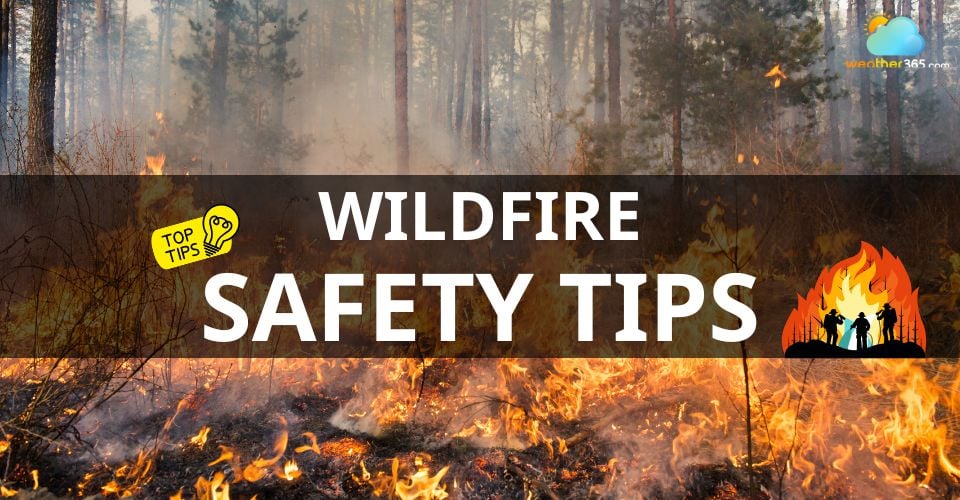
Wildfire safety tips: What to do BEFORE - DURING - AFTER a wildfire
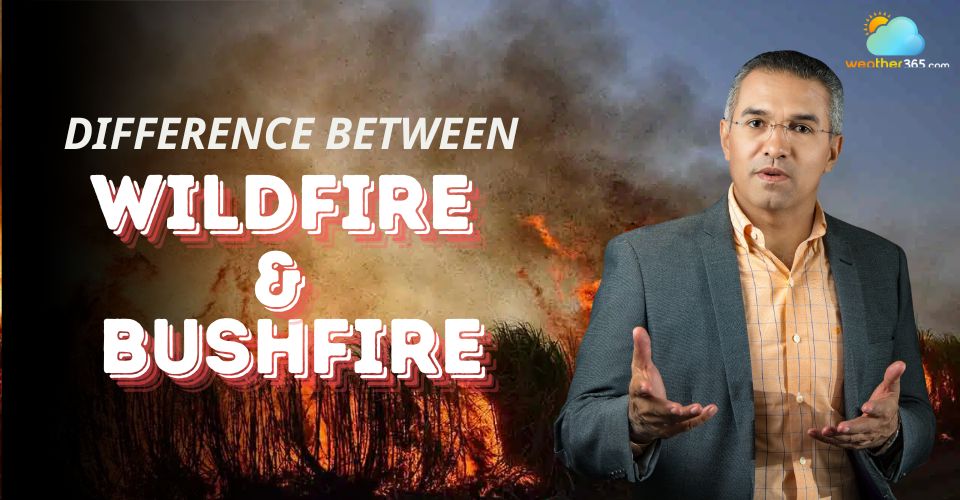

0 Comment
Leave a comment
Your email address will not be published. Required fields are marked *